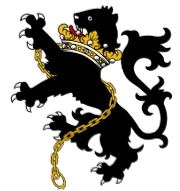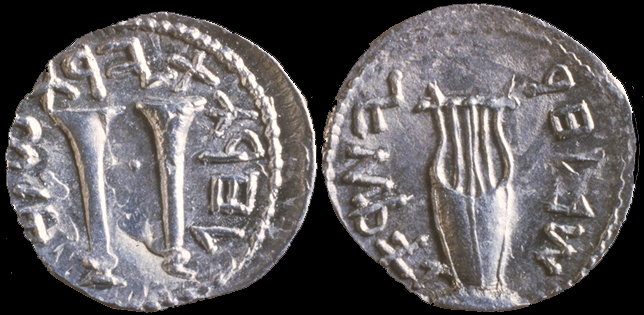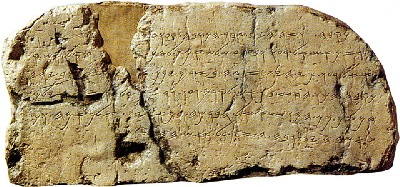- Home Page
- Books
- Articles
- The Tribes
- Presentations
- Bonus Material
Ancient History Reconsidered


The Celts:
The Celts were variously known as Gauls, Galatae (Greek Γαλατῶν1 Galatun or Γαλάται2 Galatæ) and Galations:
“Few nations have wandered so far and wide as the Galatæ. We meet with them in Europe, Asia, and Africa, under the various names of Galatæ Galatians, Gauls, and Kelts. Galatia, in Asia Minor, was settled by one of these hordes.”3
They are first mentioned in the Tell El Amarna Letters, which are dated to the 18th Dynasty kings Amenhotep III and Akhenaten, where they are variously called Kelti, Kelte, Kielte etc.4 They are recorded as being mercenaries, at first assisting the king of Jerusalem and then later joining forces with the kings of Syria against Jerusalem.


These names are all a variant spelling of the name Gilead, who was a son of Machir, son of Menashe. He gave his name to a family called גִּלְעָדִי Gileadi. (Num. 26:29 transliterated as Gileadites in the AV.) This was also the name of the land in which the tribe of Gilead settled, though I would argue that the land was actually named after Gilead. There is ample evidence to show that many of the names used in the Hebrew Bible were updated during the Persian Period. The Hebrew Box script likewise does not date any earlier than the Persian Period. The inscriptions on the Gezer Calendar5 as well as on Hezekiah's tunnel,6 for instance, are both written in what is known as the Paleo-Hebrew script – not the Hebrew Box Script which is used in all modern Hebrew text books. The Paleo-Hebrew script was still being used as late as 135 ce.
Quoting from Hipparchus, Strabo informs us that the people Hipparchus called Celts, he believed to be Britons.7 This tells us that there was no difference between the two peoples. Academics also like to place a distinction between the Germanic peoples and the Celts, though Strabo informs us:
“At the present time indeed they [i.e. the Gauls] are all at peace, being in subjection and living under the command of the Romans, who have subdued them; but we have described their customs as we understand they existed in former times, and as they still exist amongst the Germans. These two nations [i.e. the Gauls and the Germans], both by nature and in their form of government, are similar and related to each other. Their countries border on each other, being separated by the river Rhine, and are for the most part similar. Germany, however, is more to the north, if we compare together the southern and northern parts of the two countries respectively.”8
And again...
“Next after the Keltic nations come the Germans who inhabit the country to the east beyond the Rhine; and these differ but little from the Keltic race, except in their being more fierce, of a larger stature, and more ruddy in countenance; but in every other respect, their figure, their customs and manners of life, are such as we have related of the Kelts. The Romans therefore, I think, have very appositely applied to them the name ‘Germani,’ as signifying genuine; for in the Latin language Germani signifies genuine.”9
This rationalization of the meaning of the name by Strabo is typical of the classical writers. The name German was first used by Herodotus when referring to the inhabitants of Carmania (pronounced Karmania with a hard ‘c’) in Persia. He called them Germanioi (Γερμάνιοι), i.e. Germans or Germanians.10 There was also a town called Germanikia (Γερμανίκεια) mentioned by Ptolemy which was located somewhere in the land of Commagene in North Syria.11 The name is therefore clearly associated with Israel and may be a metathesis of the name Omri. The interchange of the ‘k’ and ‘g’ in ancient languages is well-attested. Alternatively, it may be a variant spelling of Kumani, a name which, according to Luckenbill, could also be written Geumenek.12 (See below for a discussion of the name Kumani.) These regions in Persia and northern Israel were at one time occupied by Israelite tribes. The tribe of Pasargadae who dwelt in Persia, for example, were named after the tribe of Gad. According to Joseph Arthur Gobineau, the name Pasargadae means ‘Sons of Gad’.13 We should bear in mind, however, that names were used indiscriminately by the classical writers as they had no more of an idea of who was who than we have today. Such names were applied generically to a number of different tribes who were dwelling in the same region.
Herodotus goes on to tell us that the Pasargadae belonged to “the clan of the Achaemenidae”.14 In the Assyrian records of Tukulti-Ninurta I, the Achaemenids were called Ukumani:
“On my accession to the royal throne, in my first year of reign, I carried off 28,800 Hittite warriors from the other side of the Euphrates, and in the Iaurî mountains, my hand conquered the Kurtî and Ukumanî as far as Sharnida (and) Mehri. The tribute of their lands and the abundance of their mountains, yearly I received.15
Sharnida is the region of Sharon plain in northern Israel. Iauri (Hebrew יַעַר yaar) simply means ‘forest’ and presumably refers to the forest of Lebanon. The land of Mehri was named after the Mehri (also called Mehrani) who are said to have dwelt in the land which we known from the Bible as Gilead, a people who are recognisable as the tribe named after Machir, son of Menashe who dwelt therein. These were the people called Macrones by Herodotus, a people who practised circumcision.16 In his day, they were located in northern Anatolia, in land which at one time belonged to the Medes. (See Section entitled Mount Seir in Legacy of Edom.) The Mehrani/Macrones had been deported from their homeland and settled therein by the Assyrians.
The Ukumani were simply called Kumani by the later Assyrian kings Tiglathpileser I17 and Adad-nirari II.18 The dropping of the initial consonant is also well-attested in ancient languages.
Herodotus informs us that the Persian royal family were descended from Perses son of Perseus son of Danaus.19 He also tells us that Darius I king of Persia, son of Hystaspes, was an Achaemenid.20 Cyrus king of Persia was also descended from Achaemenes.21 Danaus was the generic name the Greeks gave to the inhabitants of northern Israel. Perses appears to be Peresh son of Machir, son of Menashe (1 Chron. 7:16.) though it could also be a transliteration of the family name Paretz (AV Pharez), this being the name of one of the two sons of Tamar. (Gen. 38:29-30.) King David was descended from the Paretz line.
“And I will set my throne in Elam [i.e. Persia], and will destroy from thence the king and the princes, saith the LORD.” (Jer. 49:38.)
The kings of Persia were therefore of Israelite descent. In the Persian and Assyrian languages, as well as the Irish and Brettonic languages, the letter ‘m’ was often (though not always) pronounced as a ‘v’ or a ‘b’,22 hence for Achaemenid and Ukumani, we should read Achavenu or Ahabenu. They were Israelites who took their name from Ahab king of Israel.
As mentioned above, Strabo placed the Celts to the south of the Rhine. He and other writers also record that the Celts inhabited a large area of western Spain. Reporting in the Western Mail on 5 May 2008, Darren Devine has recorded that Professor Koch of the University of Wales is calling for a radical reconsideration of the accepted doctrine that they arrived through central Europe and argues that there is every indication that they arrived via Spain:
“But Professor Koch, of the University of Wales Centre for Advanced Welsh & Celtic Studies, in Aberystwyth, says archaeological inscriptions on stones show we came from southern Portugal and south-west Spain.
“He said: ‘Celts are said to come from west central Europe – Austria, southern Germany, eastern France and that part of the world. That’s been the theory that everybody has grown up with for at least 100 years. There is evidence that the Celtic languages were spoken there because of place names and people’s names. But the assumption was that was where they came from. I think they got there later. There is evidence in Spain and Portugal indicating they were there 500 or more years before.’
“Professor Koch says there are Celtic texts in Portugal and Spain way before they started springing up in central Europe during Roman times. One key piece of evidence is the earliest written language of western Europe – Tartessian, found on inscribed stones in Portugal and Spain dating back to between 800BC and 400BC. The professor maintains this language can be deciphered as Celtic.
“Expert on Welsh history and archaeology Dr Raimund Karl, says there is also biological and genetic evidence to support professor Koch’s theory. He said: ‘In the last couple of years there have been a number of genetic studies of human DNA indicating that the population of much of the western part of the British Isles is related to other communities along the Atlantic seafront. These include Brittany, northern Spain, Portugal and the French Atlantic coast. That’s their genetic origin.’
“But Dr Karl, of the University of Wales, Bangor, said there is also archaeological evidence suggesting a cultural link with central Europe. ‘There is evidence suggesting a link with central Europe from elite-material culture – stuff associated with the upper parts of society. This includes weaponry, feasting equipment, artwork on jewellery and other prestigious items.’”23
In reality, this was also the view of the classical writers. Herodotus informs us that, in his day, the Celts were located both in south western Spain and on the upper reaches of the River Danube, which he called Ister:
“For the Ister [i.e. Danube] flows from the land of the Celts and the city of Pyrene through the very middle of Europe; now the Celts live beyond the Pillars of Heracles, being neighbors of the Cynesii, who are the westernmost of all the peoples inhabiting Europe.”24
By this statement, the inference is that the Celts had only recently arrived in these regions.
“for the Ister traverses the whole of Europe, rising among the Celts, who are the most westerly dwellers in Europe, except for the Cynetes, and flowing thus clean across Europe it issues forth along the borders of Scythia.”25
More importantly, he tells us that Europe was in his day mainly uninhabited:
“But it is plain that none have obtained knowledge of Europe’s eastern or northern regions, so as to be able say if it is bounded by seas; its length is known to be enough to stretch along both Asia and Libya.”26
Appian informs us that the Celts made regular trips by sea from Spain to Britain.27 The name Portugal literally means ‘Port of the Gauls’. The evidence shows that there is very little difference between most of the various migrating tribes. This is because they were mainly Israelites, though Edomites, Assyrians and Chaldeans also accompanied them as demonstrated in The Forgotten Tribe of Naphtali & the Phoenicians as well as in Legacy of Edom, copies of which can both be downloaded free of charge from this site.
| 1. | Strabo, Geography i.iii.21. [Return] |
| 2. | Appian, The Wars in Spain Chap. 1, Sect. 1. [Return] |
| 3. | Strabo, Geography, i.iii.21, fn.9 written by H. C. Hamilton, Vol. 1 of 3 of Bohn's Classical Library, H. C. Hamilton & W. Falconer, Covent Garden, London 1892. [Return] |
| 4. | The Tell El-Amarna Tablets Vol. 2, Letters 279:12, 280:11 & 17, 287:11, 289:28 & 290:10 & 18 Samuel A B Mercer, AMS Press, New York 1939. [Return] |
| 5. | See for example the Wikipedia article Gezer Calendar at http://en.wikipedia.org/wiki/Gezer_Calendar. [Return] |
| 6. | See for example the Wikipedia article Siloam Inscription at http://en.wikipedia.org/wiki/Siloam_Inscription and also the Hebrew Roots Project at http://www.hebrew-roots-project.com/13201.html. [Return] |
| 7. | Strabo, Geography ii.i.18. [Return] |
| 8. | Ibid. iv.iv.2. [Return] |
| 9. | Ibid. vii.i.2. [Return] |
| 10. | Herodotus, Histories i.125. [Return] |
| 11. | Ptolemy, Geography Book 5, Chap. 14, though Chap. 15 in some copies. [Return] |
| 12. | Ancient Records of Assyria and Babylonia Vol. 2, p.469 (Index of Names - See entry for Kumani), Daniel David Luckenbill, University of Chicago Press, Chicago 1926. [Return] |
| 13. | “La tribu des Pasargades, à laquelle appartenait la famille achéménide, porte un nom qui donne beaucoup de poids à la tradition persane: ‘Pasar-Gad’, c’est-à-dire ‘les fils de Gad’ dans le dialecte araméo-iranien de la Perside…”, Histoire des Perses d’après les Auteurs Orientaux Vol. 2, Book 4: Les Achéménides, p.4, Chap. 1: Origine de Darius 1er, et commencements de son règne, Le Comte de Gobineau (Joseph Arthur Gobineau), Paris 1986. [Return] |
| 14. | Herodotus, Histories i.125. [Return] |
| 15. | Luckenbill, Ancient Records of Assyria and Babylonia Vol. 1, p.57, §.164. [Return] |
| 16. | Herodotus, Histories ii.104. [Return] |
| 17. | Luckenbill, Ancient Records of Assyria and Babylonia Vol. 1, p.101, §.321. [Return] |
| 18. | Ibid. Vol. 1, p.110, §.360. [Return] |
| 19. | Herodotus, Histories vii.150. [Return] |
| 20. | Ibid. i.209. [Return] |
| 21. | Ibid. iii.75. [Return] |
| 22. | Hence in the Assyrian records, Greece is called Iamani. (Ibid., Vol. 2, p.13, §.30, fn.2). In the Hebrew, the Iamani are called Yavanim. The names Lullumi and Lullubi are also used interchangeably in the Assyrian texts. Amel Marduk, the son of Nebuchadnezzar (see http://en.Wikipedia.org/wiki/Amel-Marduk, is likewise called Evil-Merodach in the Bible. (2 Kings 25:27) [Return] |
| 23. | Western Mail, Wales Online, 5 May 2008, Darren Devine. [Return] |
| 24. | Herodotus, Histories ii.33. [Return] |
| 25 | Ibid. iv.49. [Return] |
| 26 | Ibid. iv.45. [Return] |
| 27. | Appian, Wars in Spain Chap. 1, Sect. 1. [Return] |
Dated 1 Dec 2013.
©AHR Researches, Birmingham, England.